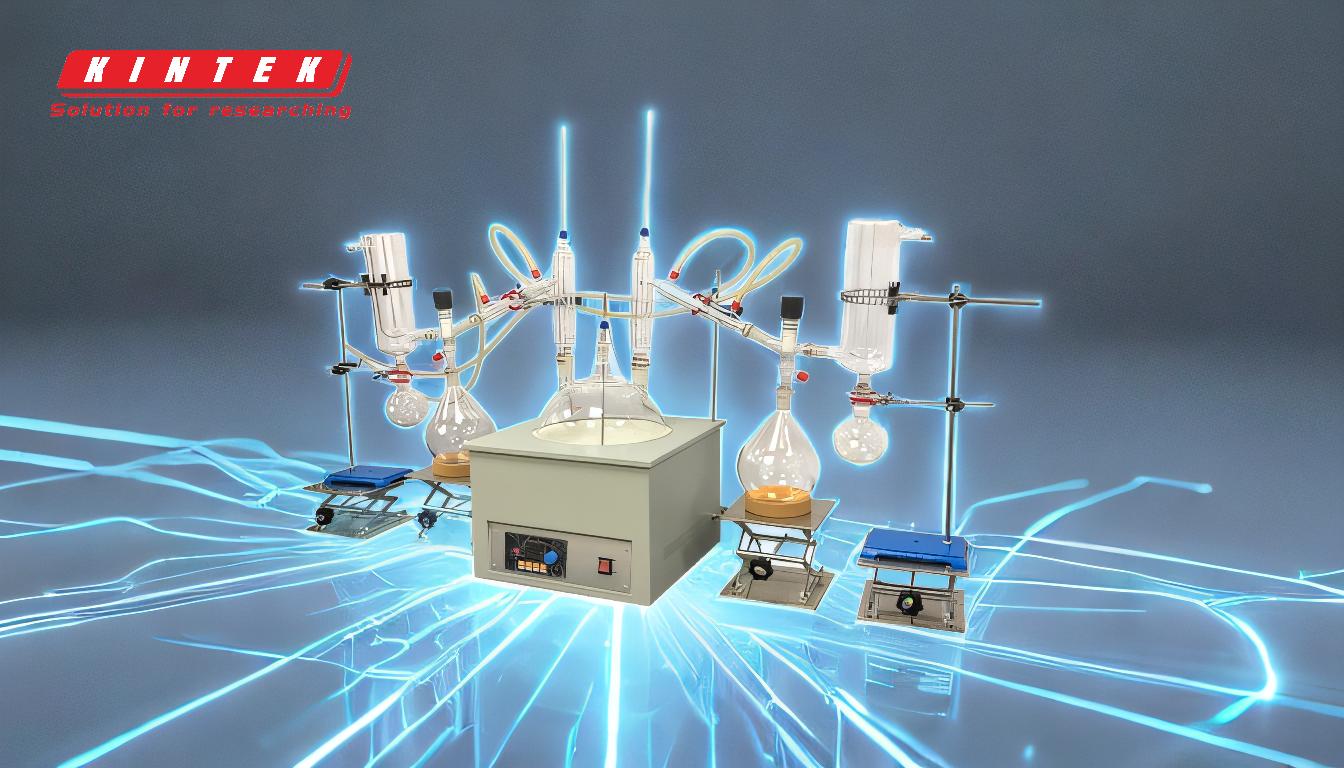Distillation is a process that significantly enhances the purity of a substance by separating its components based on their different boiling points. By heating a mixture, the component with the lower boiling point vaporizes first, and this vapor is then condensed back into a liquid form and collected. The process can be fine-tuned by gradually increasing the temperature and monitoring the condensation, ensuring that impurities are removed and the desired level of purity is achieved. Advanced techniques like thin film technology further improve efficiency by facilitating quicker evaporation of unwanted materials. Overall, distillation is a highly effective method for obtaining pure substances from mixtures.
Key Points Explained:

-
Basic Principle of Distillation:
- Distillation separates components in a mixture based on their volatility, primarily their boiling points.
- The mixture is heated, causing the component with the lower boiling point to vaporize first.
- The vapor is then cooled and condensed back into a liquid, which is collected as the distillate.
-
Ensuring Purity Through Temperature Control:
- Purity is achieved by carefully controlling the temperature during the distillation process.
- Gradually raising the temperature allows for the selective vaporization of the desired component, while impurities with higher boiling points remain in the original mixture.
- Monitoring the condensation process ensures that the distillate is collected only when it reaches the desired level of purity, free from coloration or streaks.
-
Role of Vacuum Pressure:
- Vacuum pressure can be used in distillation to lower the boiling points of the components, making the process more efficient and reducing the risk of thermal degradation.
- This is particularly useful for heat-sensitive materials, such as cannabinoids, where maintaining the integrity of the desired compounds is crucial.
-
Thin Film Technology:
- Thin film technology enhances the efficiency of distillation by spreading the mixture into a thin layer.
- This increases the surface area, allowing for quicker and more effective evaporation of unwanted materials.
- The technology is especially beneficial in processes where rapid separation and high purity are required.
-
Applications and Benefits:
- Distillation is widely used in various industries, including pharmaceuticals, petrochemicals, and food and beverage, to obtain pure substances from complex mixtures.
- The process is highly effective in removing volatile solvents and impurities, ensuring the final product meets stringent purity standards.
- The ability to fine-tune the process makes distillation a versatile and reliable method for achieving high levels of purity.
By understanding these key points, one can appreciate how distillation is a fundamental technique for enhancing the purity of substances, with applications across a wide range of industries. The combination of temperature control, vacuum pressure, and advanced technologies like thin film distillation ensures that the process is both efficient and effective in producing high-purity products.
Summary Table:
| Key Aspect | Description |
|---|---|
| Basic Principle | Separates components based on boiling points via heating, vaporization, and condensation. |
| Temperature Control | Ensures selective vaporization and purity by gradual heating and monitoring. |
| Vacuum Pressure | Lowers boiling points, reducing thermal degradation for heat-sensitive materials. |
| Thin Film Technology | Enhances efficiency by increasing surface area for quicker evaporation. |
| Applications | Used in pharmaceuticals, petrochemicals, and food industries for high-purity products. |
Discover how distillation can optimize your processes—contact our experts today!











